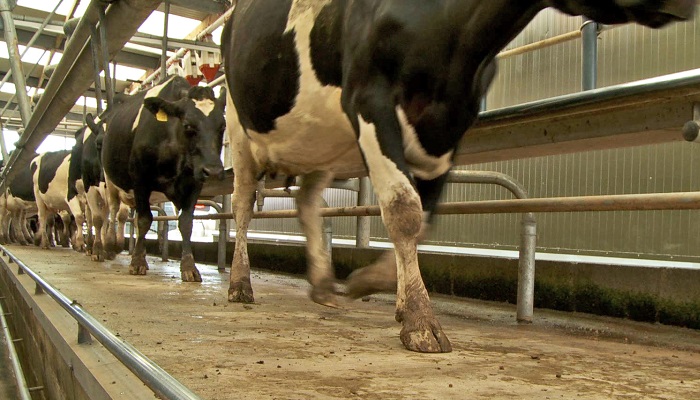02 November 2023
Dairy advice: Act early when managing body condition score over an extended dry period

With milk yields falling rapidly, some cows may have to be dried off well in advance of their planned dry off date.
Given that early dry off is normally one of the options suggested for cows that are under conditioned, Stuart Childs, Teagasc Dairy Specialist, looks at the implications for cows that are in good body condition currently and are now going to be dry for an extended period prior to their next calving.
Normally, the focus at this time of year is on making sure cows don’t lose condition. When grazing on low dry matter grass, with normal to good milk yields, cows can very quickly lose body condition in poor weather.
However, this year, we have the opposite scenario. Wet weather has forced the housing of cows on a full-time basis nearly a month earlier than normal. This coupled with a dramatic fall off in milk volume has some cows at the point of dry off much earlier than normal.
From a cost point of view, it makes sense to dry off cows that aren’t covering their costs, but it could potentially impact through excessive body condition at calving in 2024. This will have to be managed in order to ensure that the majority of cows on farms calve at the correct condition score (Figure 1) to minimise difficult calvings, ketosis and milk fever.
Figure 1: Target body condition score for cows at calving

Target at calving is a BCS of 3.25, with an acceptable range of 0.25 units above or below this point.
Individual cow condition will need to be managed. This will involve grouping cows to treat them appropriately to either hold them in their present condition – if already in optimal body condition – or to reduce condition if already over conditioned. The key to this is to start early to manage cow condition. Ideally you don’t want to be restricting cows in the immediate run in to calving, as they will have a reduced intake anyway at that stage and further restriction is also likely to trigger some metabolic issues around calving.
Keep in mind that over a standard 60-70 day dry period, cows at BCS 2.75 at dry off, eating reasonable quality (68-70 DMD) silage, will get to the optimal range of BCS at calving.
If these cows are dry for longer than the standard dry period, they are at risk of becoming over-conditioned. High-quality silage will have a higher intake potential also which means cows will eat more of it. High-quality silage will therefore need to be restricted. Restricting feed intake in practice can be a challenge, so reducing the energy density of the diet by including straw as part of the feed offered may be easier to do. Talk to your advisor about practical ways of doing this on your farm.
In some cases, some people may consider going to once a day (OAD) milking given the low volumes being produced. This too has a positive impact on body condition so again this will need to be accounted for when planning the dry period feeding regime. See Table 1 for the impact on BCS with varying silage quality, long dry periods or OAD. It should also be noted that switching to once a day can have an impact on somatic cell count (SCC), so high SCC cows may need to be dried off before switching.
Table 1: Guideline effects of silage quality and management options on BCS change
| Silage DMD | |||
|---|---|---|---|
| 62% | 68% | 72% | |
| 8-week dry period | |||
| BCS change in dry period | -0.16 | 0.20 | 0.50 |
| Management options for BCS | BCS effect | ||
| Extra 6 weeks dry2 | +0.20 | +0.45 | +0.55 |
| OAD milking for 7 weeks3 | +0.18 | +0.18 | +0.18 |
|
1Energy demand versus intake on 62, 68 and 72DMD silage. Assumes ad-lib silage offered. 26weeks extra dry period on same silage ad-lib. 3Assuming 20% reduction from an average 14.5L/day in final 7 weeks, feed unchanged. |
|||
In summary, given the significant drop off in milk yield in recent weeks, cows may be milked once a day or dried off early on farms this year. This has the potential to produce many over-conditioned cows at calving if not managed properly. To manage this scenario people need to:
- Assess quality and quantity of feed available;
- Identify the calving date and current BCS for each cow;
- Batch cows according to BCS over the winter period and manage to minimise excessive BCS gain over the dry period.
Also read: Efficient practices and facilities key to reducing labour on Irish family dairy farms
Also read: Assessing silage quantity and quality
